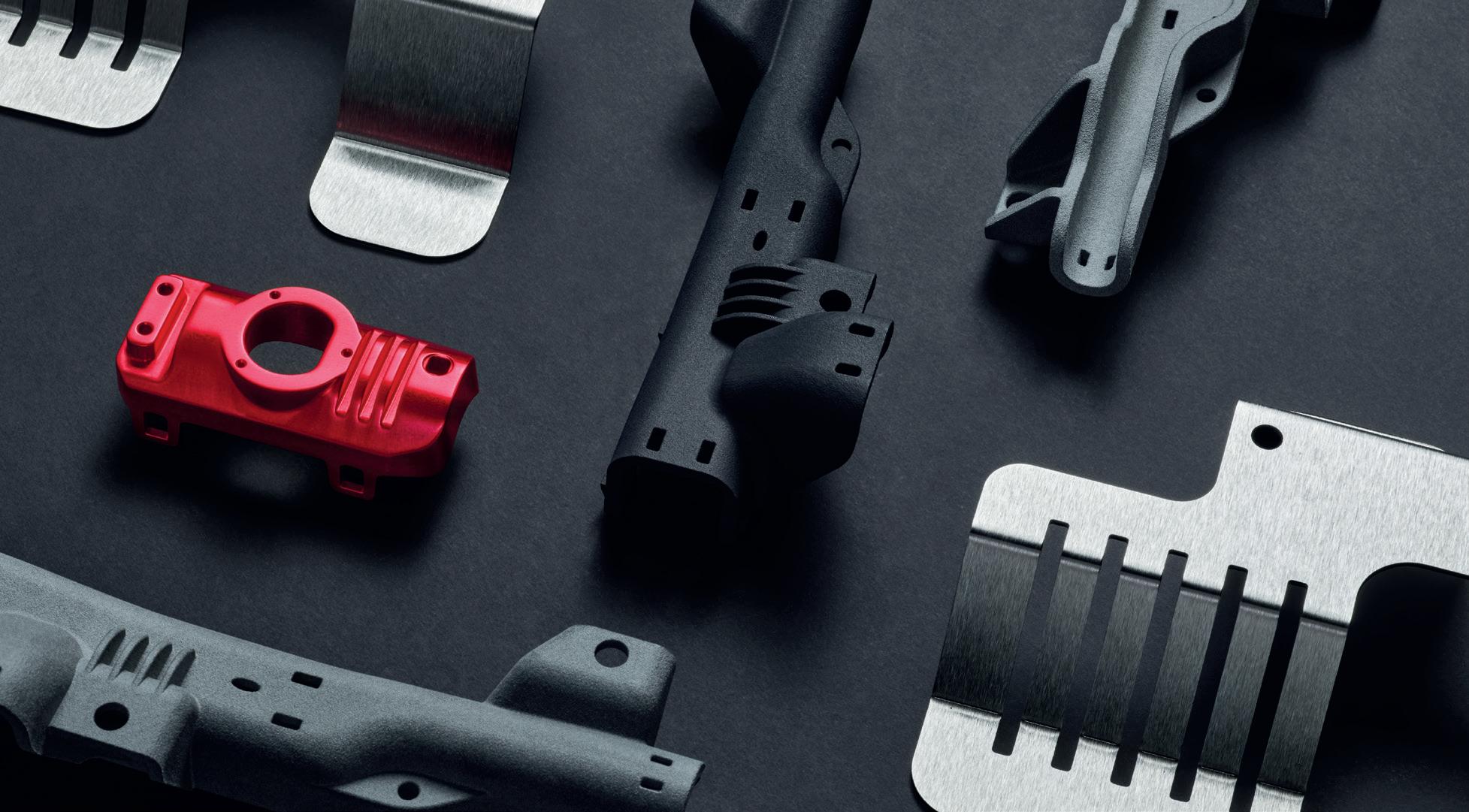EVOLVING BINDER A
t several intervals over the last ten years, the business decisions of GE have marked the progression of metal additive manufacturing (AM). There was the LEAP fuel nozzle application, proving its capacity for volume production; the acquisitions of Concept Laser and Arcam to further underline its commitment to AM technology; and then its entry into binder jet with the H2 program, a validation of this particular process’ potential. Famously, GE Additive’s binder jet project got underway when then General Manager Mohammed Ehteshami tasked a team with developing a new machine within 55 days. They had a prototype ready to announce within 47 but have spent the subsequent three years taking a steadier approach as it readies to introduce a commercial product to market. The H2 efforts have gone on to encompass a beta program that piqued the interest of power generation firm Cummins, metals specialist Sandvik and transportation company Wabtec. Wabtec has been using the technology for two years, deploying it alongside its existing laser melting 3D printing platforms in its Grove City, PA facility after initial work in GE Additive’s Cincinnati labs. The company considers binder jet to be a ‘unique metal process’ and is using applications of casting as its guidepost to identify additive manufacturable parts. Currently, Wabtec is carrying out business case analyses on engine components, traction systems and emission control systems in line with its services to the freight and transit sectors, while spare parts are also on the agenda. Wabtec's 13-strong AM team is being involved in the majority of the company's ‘major initiatives’, including its battery-electric freight locomotive efforts which will reduce emissions by at least 10%. It is said that AM is being embraced company-wide, with Wabtec excited to see how much disruption technologies like binder jet could cause. “Additive manufacturing provides that opportunity to innovate by unlocking traditional design constraints,” Wabtec’s Global Additive Manufacturing Leader Anthony Mott told TCT. “There is an opportunity to improve rail products through the improved efficiency, better quality, better reliability, all at a competitive price point. And that price point is where binder jet really shines. Binder jet provides those traditional benefits but at a speed that provides better price per part cost. That makes that business case much more attractive.”
016 / www.tctmagazine.com / VOL 7 ISSUE 3
These benefits have not only encouraged GE to explore binder jet 3D printing but enticed Digital Metal, Desktop Metal and HP to follow the path set out by ExOne. What for a while was a niche 3D printing process, is now very much a competitive space. And with increased competition comes new ideas. MEET META Originating from within MIT, binder jet techniques typically see binding agents deposited onto a powder bed with a levelling roller laying down more powder to form parts layer by layer. After the print, parts are removed from the powder, cured and then go through sintering or infiltration. GE Additive is perhaps the most tight-lipped about the intricacies of how its binder jet process works, but HP has publicly revealed there is no debinding step in its process. Meanwhile, Desktop Metal has come to market with a bi-directional single pass jetting technology that applies powder deposition, spreading, compacting, ballistic suppression and binder jetting with each pass over the build area. It also has the Live Sinter software platform which generates negative offset geometries to fill part designs with cells that go through the process of shrinking and distorting the parts’ experience in a furnace to eliminate the need for supports and reduce trial and error in sintering. Such increased competition has seen binder jet pioneer ExOne develop its patented NanoFuse binders which are embedded with nanoparticles to simplify the sintering process and improve part quality. The latest company to step into the binder jetting ring is one spun out of the University of Liverpool: Meta Additive. Described as ‘reactive binder jet printing’, Meta’s process leans on a binder made up of molecular ink, nanoparticles and microparticles which can simultaneously bind and infiltrate the powder bed with functional build material. When the binder sees the powder bed, there is a reaction within the process that ensures the ‘green part’ is much stronger than conventional binder jet parts. As a result, parts can be up to 88% dense, meaning heat treatment is more of a ‘consolidation step,’ while shrinkage rates are as low as 2%.
SHOWN: META ADDITIVE'S BINDER JET TECHNOLOGY
SHOWN: GE ADDITIVE'S H2 MACHINE CREDIT: GE ADDITIVE







